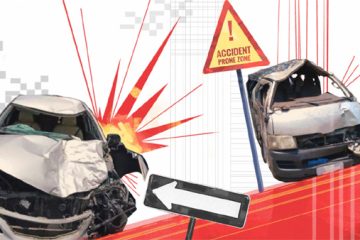People bade Abdur Razzak a teary farewell as the frontline organiser of the Liberation War was laid to rest at Banani Graveyard with state honour on Monday afternoon.
A smartly turned out contingent of the police gave a state honour as bugles played the Last Post before the body was lowered into the grave at the banana Graveyard. Mourners observed a minute’s silence and offered at the graveside.
Senior Awami League leaders handed over Razzak’s body to his two sons, Nahin and Fahim Razzak, who joined the burial rites, as mourners burst into tears.
Among others, AL leaders Amir Hossain Amu, Tofail Ahmed, Abdul Jalil, Mohiuddin Khan Alamgir, Obaidul Quader, Jahangir Kabir Nanak, Mahbubul
Alam Hanif, BM Mozameel Haque, AFM Bahauddin Nasim, Abul Kalam Azad and Hasan Mahmud were present.
A group of freedom fighters also paid their last respect to Razzak.
The cabinet at its weekly meeting on the day adopted a condolence motion on the death of Abdur Razzak, also Awami League advisory council member and a former minister.
The meeting recalled the contributions of the veteran leader to all democratic movements beginning from the education movement in 1962, said the prime minister’s press secretary Abul Kalam Azad.
Abdur Razzak, whose illustrious political career spanned half a century, died in King’s College Hospital in London on Friday after protracted illness.
Earlier, the fifth and last namaz-e-janaza of Abdur Razzak was held at the graveyard around 3:40pm.
The body was flown to Razzak’s ancestral village at Shariatpur’s Damudda in the morning and brought to Banani Graveyard from there at about 3:30pm.
People from walks of life, including politicians, lawmakers, lawyers, socio-cultural activists and students gathered at Razzak’s ancestral home in Damudda and on the upazila parishad premises where the body was kept for public view, to pay homage to the late leader, who was lawmaker elected from Shariatpur-3 constituency.
Razzak’s fourth namaz-e janaza was hold at the Damudda upazila mosque after Johr prayers. Amir Hossain Amu, Tofail Ahmed, Mahbubul Alam Hanif, Jahangir Kabir Nanak, Bangladesh Nationalist Party leader Hemayetullah Auranga and Shariatpur district president Jamal Sharif attended the janaza.
Razzak’s first namaz-e-janaza was held in London on Saturday. His body was flown to Dhaka by a special Biman on Sunday. His second and third namaz-e-janaza were held at South Plaza of Jatiya Sangsad and Jatiya Eidgah ground with thousands of mourners attending.
The AL leader’s body was also kept at his Gulshan house, Central Shaheed Minar premises and AL headquarters on Bangabandhu Avenue, for public view on Sunday.
President Zillur Rahman, prime minister
Sheikh Hasina and people from all walks of life paid tributes to the late leader by placing wreaths at the coffin.
AL leaders and activists wore black badges and the party flag flew at half-mast atop party offices across the country on Monday – the last day of a two-day mourning programme.
Razzak, a political luminary and popular leader, never lost a general election in his career.
He was also the chairman of the parliamentary standing committee on water resources ministry. He was water resources minister in 1996-2001.
Razzak, was one the three members of the core committee of the Swadhin Bangla Biplabi Parishad, widely known as ‘nucleus’, a radical group of the Chhatra League that in early 1960s had conceived the idea of an independent nation state and started work for its establishment.
Razzak was also in the forefront of all landmark movements in the turbulent 1960s, including the historic six-point movement, the 11-point movement and the movement against the Agartala Conspiracy Case that climaxed in the 1969 popular uprising and culminated in the independence of Bangladesh in 1971.
He was the organising secretary, general secretary and presidium member of the Awami League during his illustrious political career.
Abdur Razzak fought relentlessly against communal and reactionary forces throughout his political career. He was also a leader of the movement against autocrat Ershad in 1980s.
-With New Age input




















